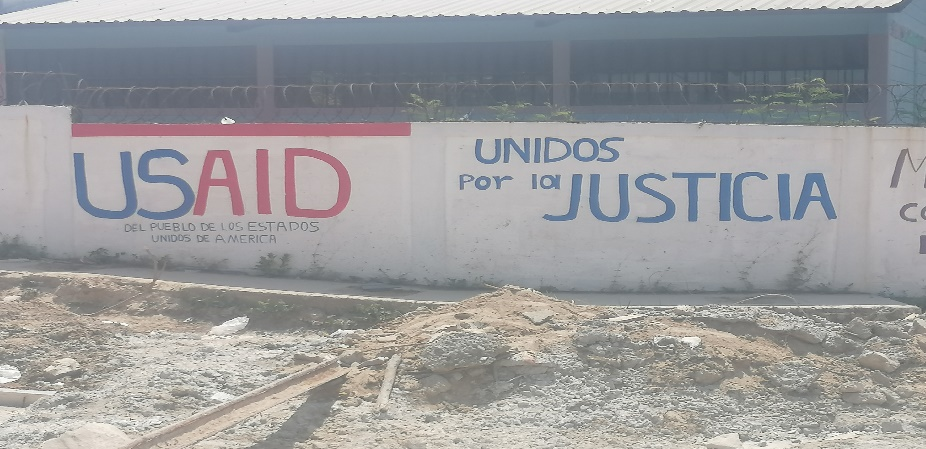“We’re assisting a woman whose ex-partner, a gang member, tried to kill her. She cannot return home, nor can she remain in Honduras. All doors are closed. What is she supposed to do? Migrate, or remain and be killed?”
This is how a staff member of a women’s rights organization in Honduras describes the stark choices women face there. Between 2010 and 2023, more than 7,000 women were murdered in the country—43.7% of them in contexts linked to organized crime (Luciano et al., 2020; UNAH, 2024). For women confronting these violent structures, there is no real choice: Migration becomes the only option, a “choiceless choice.”
This is the grim reality of 2025. And, as the impact of US funding cuts for foreign aid begins to be felt, it is a reality that will only worsen unless the Honduran government and the international community step up with decisive, coordinated measures. WRC’s latest report lays this reality bare: a gender-based violence (GBV) protection system in free fall, particularly for women and girls who are displaced, deported from the US and Mexico, or migrating through the region. The report reveals a humanitarian response collapsing at the exact moment it is most needed and failing those who need it most. We recommend urgent actions that the Honduran authorities, the US government, and international actors—in collaboration with non-governmental organizations, grassroots women’s organizations, and regional governments—should take to mitigate the damage already done and to prevent further harm.
In 2023, Honduras had one of the highest femicide rates in the world—7.2 per 100,000 women. That figure was 14 times higher than Guatemala’s, eight times higher than Costa Rica’s (CEPAL, 2024), and 2.5 times higher than the United States’ (World Bank, 2025). Rape is reported nearly every hour (CDM, 2024). Impunity in GBV cases is estimated at 90% (CDM, 2025). For countless women and girls, fleeing is not about seeking a better life—it is the only way to stay alive.
But violence doesn’t stop at the border. Along migration routes, women and girls face new—and often compounded—risks: rape, abuse, trafficking, and disappearances. And with the Trump administration’s return to office, the situation has worsened. Closed borders, reverse migration, and mass deportations are pushing survivors back into the very dangers they were fleeing. Those who remain in transit or destination countries—often without legal status—are left vulnerable to exploitation by criminal networks and abuse by law enforcement and immigration authorities.
And there are other changes. Not the violence; that is a constant. What’s new is the systematic dismantling of the limited—but vital—humanitarian assistance that once supported women and girls. In the months since the drastic suspension of US funding for international aid—which in Honduras accounted for 78% of all international cooperation—an estimated 60% to 100% of all GBV services provided by domestic and international organizations has been reduced or shut down completely. The protection system is now on the brink of collapse.
The consequences are painfully visible. One practitioner described the case of a very young woman deported from the US after being raped in detention: assaulted with a bottle by another woman, and given no one to report to. “She arrived here completely shattered—her body and her spirit broken,” the psychologist said. With US-funded protection systems dismantled, there was little to offer her.
In the past, three government-funded Centers for Attention to Returned Migrants (CARM) received support from international partners backed by the US. Now, a single doctor or psychologist may be responsible for hundreds of deportees a day. Despite the strong commitment of the staff at these centers, GBV screenings are rushed and lack privacy. Many women are too traumatized—or too afraid—to speak.
With support for GBV services weakened by the cuts in US funding, the outlook for 2025 and beyond is bleak. This is especially true given that Honduras already ranked among the world’s most neglected displacement crises, even before the cuts (NRC, 2024; NRC, 2025). It is a deeply concerning scenario.
Numbers alone don’t tell the story. They don’t speak for the women who couldn’t afford to flee, and who were subsequently killed—or who fled and never made it safely to a country of refuge. They don’t capture the daily fear of survivors who now have nowhere to go, and no one to turn to.
In the absence of humanitarian support, new actors are stepping into the vacuum left by these cuts—but not to help. As a representative from one international organization explained to me:
“Before, criminal groups held back because we were there—now, no one’s watching. They take women as soon as they cross [the border into Honduras], force them into prostitution in the capital for a week, and once they meet their quota, the next group arrives.”
In the face of the reckless dismantling of the United States’ humanitarian aid system, we must not abandon the safety and rights of women and girls.


